Imagine stepping into your garden and being enveloped by a rustic sanctuary that feels both timeless and inviting. Whether you’re just dipping your toes into the world of outdoor living or you’re a seasoned homeowner with a penchant for design, creating unique outdoor shelters can transform your space into a personal retreat. Rustic garden styles, with their natural textures and organic forms, offer the perfect backdrop for these special havens.
In this article, we’ll explore a variety of innovative shelter ideas that blend seamlessly with rustic aesthetics while providing functionality and charm. From cozy pergolas draped in climbing vines to handcrafted gazebos that echo natural beauty, you’ll discover practical tips and inspiring designs tailored to various skill levels and budgets. Together, let’s elevate your outdoor living experience, making it a true reflection of your style and a cherished extension of your home.
Choosing Rustic Shelter Materials
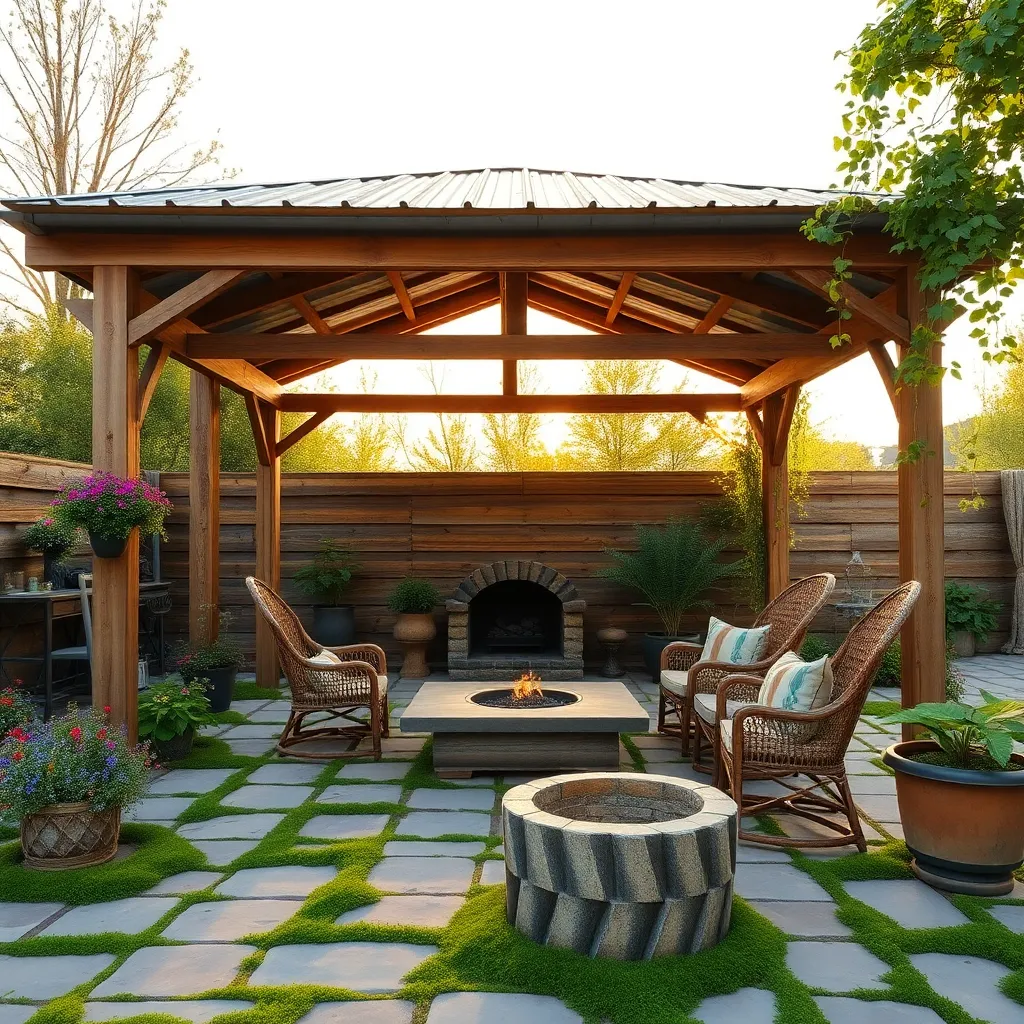
For a truly rustic garden shelter, consider using natural materials like wood and stone, which blend seamlessly into outdoor environments. Reclaimed wood not only adds character but is also eco-friendly, offering both durability and a unique aesthetic. Incorporating rough-hewn timber beams can add a sturdy, authentic feel to your shelter, while stone bases or accents ground the structure in nature. Beginners can start with simple wooden frames, while experienced builders might explore custom stonework for added complexity.
When designing your rustic shelter, ensure it complements the natural surroundings and reflects your garden’s style. Opt for a simple A-frame or open pergola design to keep construction straightforward and maintain an airy feel. Advanced builders might consider integrating features like a stone fireplace or built-in seating for added functionality. For those in wetter climates, using a corrugated metal or shingle roof can provide protection from the elements while maintaining the rustic aesthetic. Remember, the key is to combine function with natural beauty, creating a space that’s as inviting as it is practical.
Incorporating Natural Elements Creatively
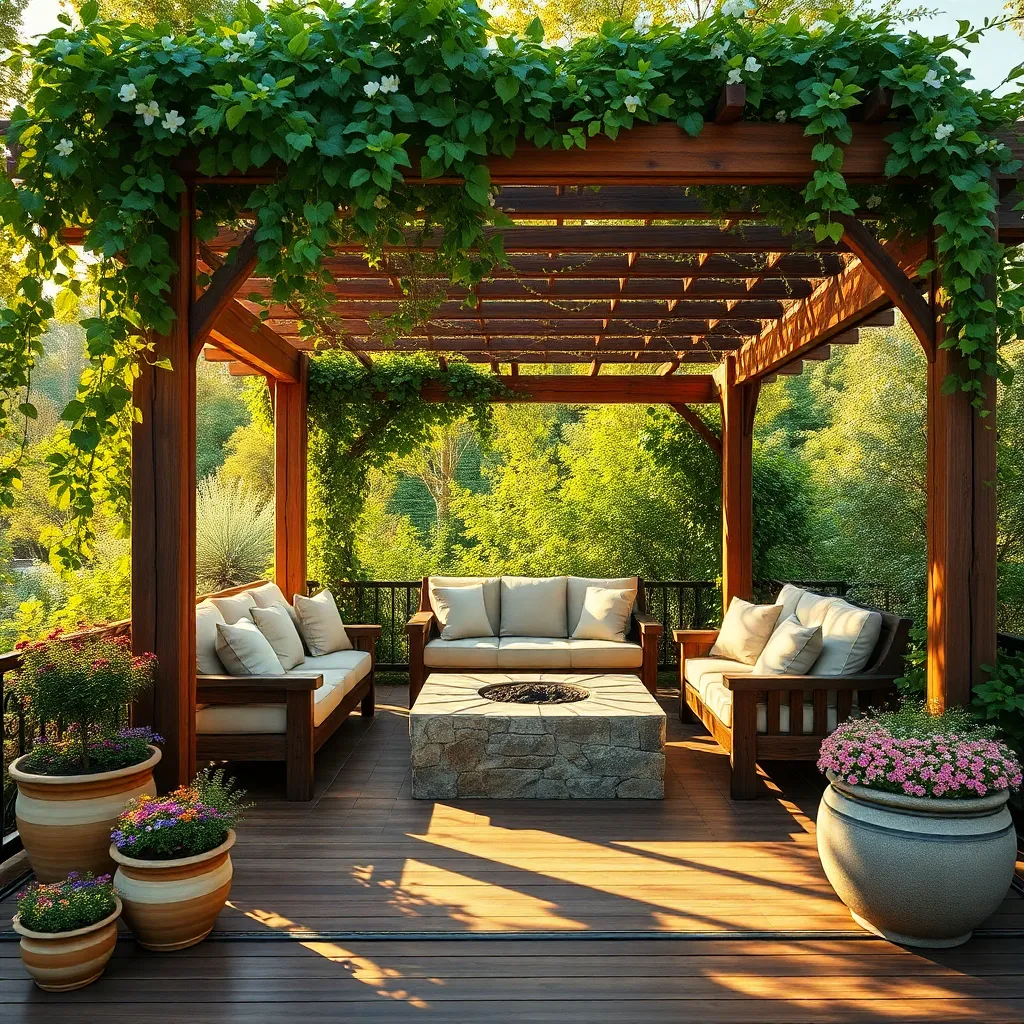
Incorporating natural elements into your outdoor shelter can seamlessly blend it with your garden, enhancing its rustic charm. Consider using untreated timber or reclaimed wood for beams and supports, which not only add a natural aesthetic but are also environmentally friendly. For a unique twist, integrate living materials like vines or climbing plants that can grow over the structure, providing both shade and a lush, organic feel. Beginners can start with fast-growing vines like clematis, while more advanced gardeners might experiment with espalier techniques for fruit trees.
For a creative edge, use natural stone or boulders as part of the foundation or as decorative elements around the shelter. Position stones strategically to create seating or pathways that connect the shelter to the rest of the garden. To ensure durability, select stones that are abundant in your local area, as they are more likely to withstand the regional climate. Advanced builders can incorporate a dry-stone wall technique for a rustic, yet refined finish, emphasizing craftsmanship and tradition. This approach not only reinforces the structure but also adds a timeless quality to your outdoor retreat.
Designing Cozy Garden Retreats
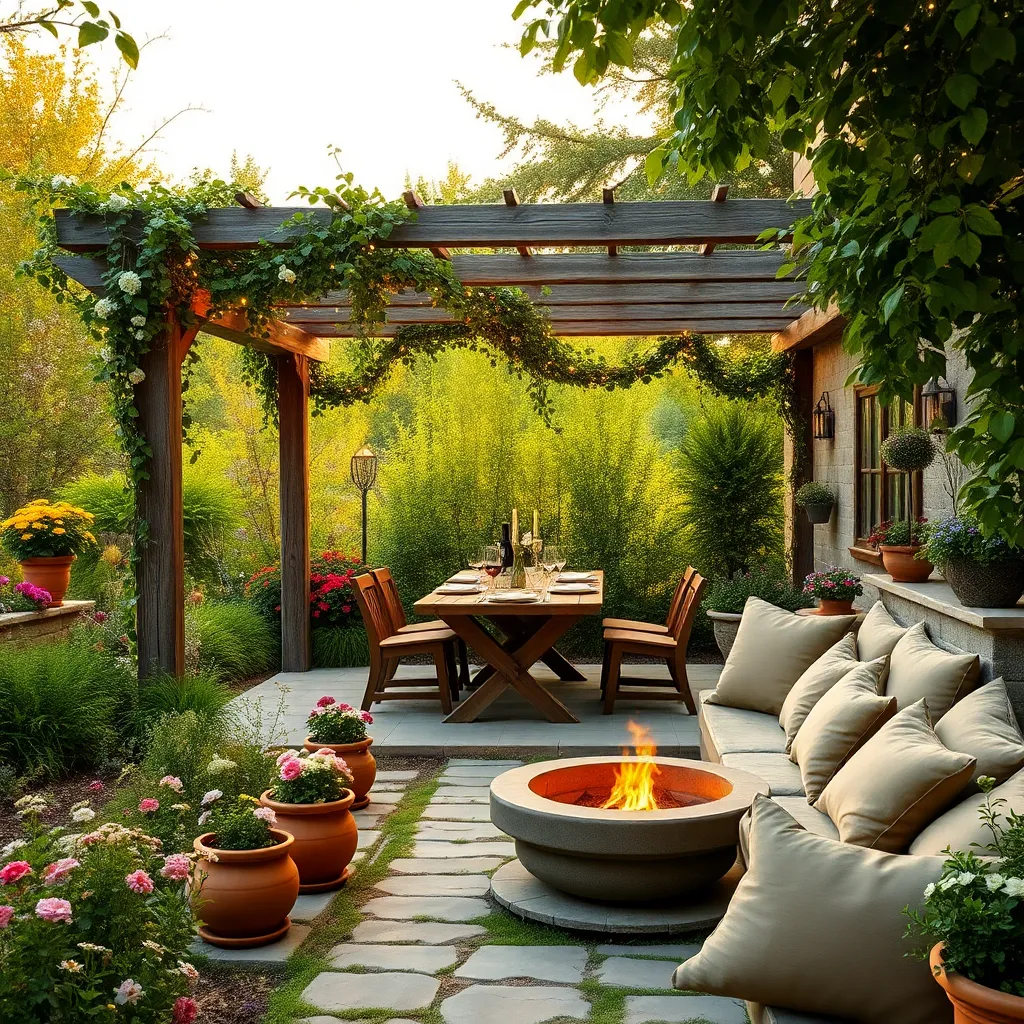
Creating a cozy garden retreat begins with choosing the right materials and design elements that blend seamlessly with your rustic garden style. Opt for natural materials like wood or stone, which provide both durability and aesthetic appeal. For a basic shelter, consider using treated timber for its weather-resistant properties and ease of construction. If you’re more experienced, try incorporating reclaimed wood or vintage bricks to add character and sustainability. Ensure your structure is stable by anchoring posts securely into the ground or using concrete footings for a more permanent installation.
Incorporate comfortable seating and soft lighting to enhance the inviting atmosphere of your garden retreat. Choose weather-resistant furniture, such as wicker or teak, and add plush cushions with removable covers for easy maintenance. Add ambiance with solar-powered lanterns or string lights to create a warm glow as the sun sets. For a touch of sophistication, consider installing a small fire pit or a chiminea to extend the usability of your retreat into cooler evenings. Remember to keep the design functional yet charming, allowing you to enjoy the serene beauty of your garden in comfort.
Blending Shelters with Landscape
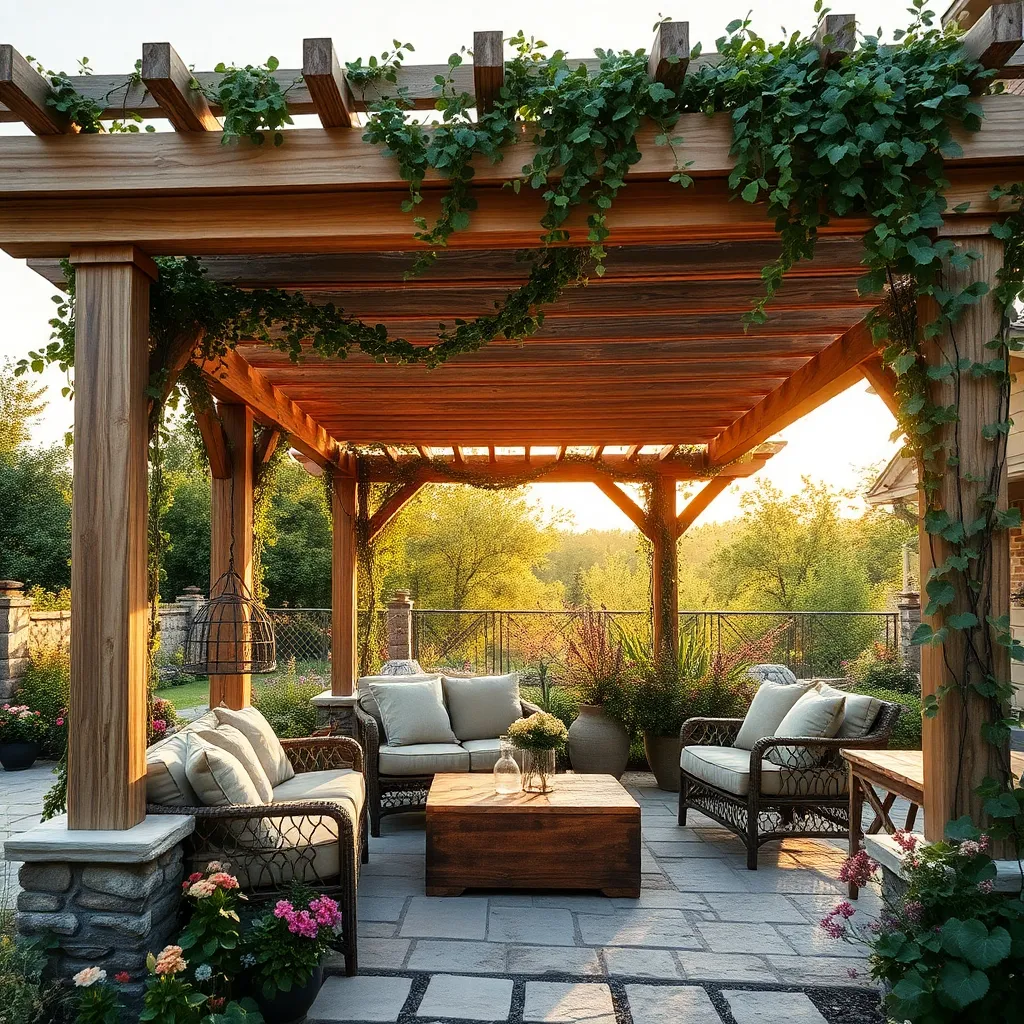
To seamlessly integrate outdoor shelters with your rustic garden, consider using natural materials like wood, stone, and thatch that complement the organic landscape. Start by choosing a location that naturally fits into your garden’s layout, such as near a group of mature trees or by a water feature, to create a harmonious transition. For beginners, simple structures like a wooden pergola can provide a charming and functional focal point, while advanced gardeners might explore custom-built stone gazebos for a more personalized touch.
Enhancing your shelter with plant life adds an extra layer of cohesion with the surrounding environment. Consider planting climbing vines like wisteria or clematis around the shelter’s supports for a lush, integrated look. To maintain a rustic feel, use weathered or aged materials for a time-worn appearance, and incorporate features like a natural stone floor or a thatched roof for added texture. Ensure the shelter is proportionate to the garden’s overall size; typically, a structure that is 10-20% of your garden space maintains balance without overpowering the landscape.
Personalizing Rustic Shelter Styles
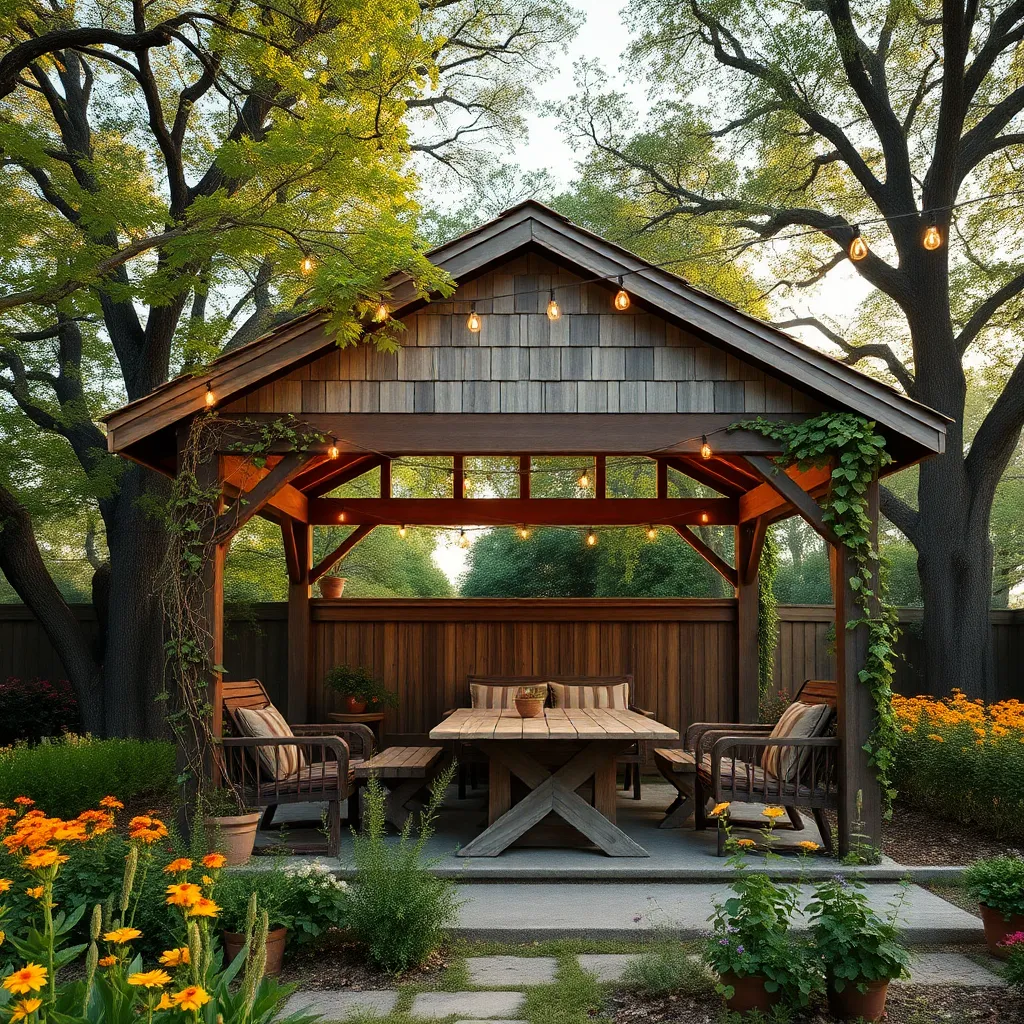
Personalizing your rustic outdoor shelter can transform it into a unique expression of your style while maintaining functionality. Start by choosing materials that resonate with the natural environment, such as reclaimed wood, stone, or bamboo. These materials not only add authenticity but also blend seamlessly with the garden’s elements. For beginners, a simple pergola constructed with untreated wood can achieve this rustic charm without overwhelming complexity. Ensure the structure is robust by using weather-resistant fasteners and finishes to extend its lifespan.
For those looking to elevate their design, consider incorporating custom features like wrought iron accents or vintage lanterns to enhance the rustic appeal. Adding a living roof with native plants can provide extra insulation and visual interest, creating a biodiverse habitat.
- Advanced gardeners might explore building with cob or adobe for a more earthy aesthetic.
- Incorporate natural stone flooring for durability and a touch of elegance.
Regardless of skill level, always prioritize the shelter’s integration with existing garden paths and plantings to maintain harmony in your outdoor space.
Conclusion: Creating Beautiful Outdoor Spaces
As we’ve journeyed through the enchanting world of rustic garden shelters, we’ve uncovered five key concepts that beautifully parallel the nuances of nurturing relationships. First, the importance of choosing the right structure, akin to building a solid foundation in relationships. Second, the value of natural elements that, like trust and communication, foster authenticity and growth. Third, the significance of adaptability, mirroring how flexibility strengthens bonds. Fourth, the role of shared spaces, promoting connection and intimacy. Lastly, the beauty of personalization, reflecting the unique touch each partner brings to a relationship.
Now, take a moment to envision how these insights can enhance your own relationship. Consider introducing a shared outdoor project with your partner, fostering collaboration and deeper connection.
For ongoing inspiration, be sure to save or bookmark this article. It will serve as a trusted resource whenever you seek to infuse your relationship with rustic charm and thoughtful insights.
As you cultivate these garden-inspired principles, anticipate a flourishing relationship that not only stands the test of time but blossoms with enduring love and understanding. Your journey to relationship success is just beginning—embrace it with open arms and an open heart.
